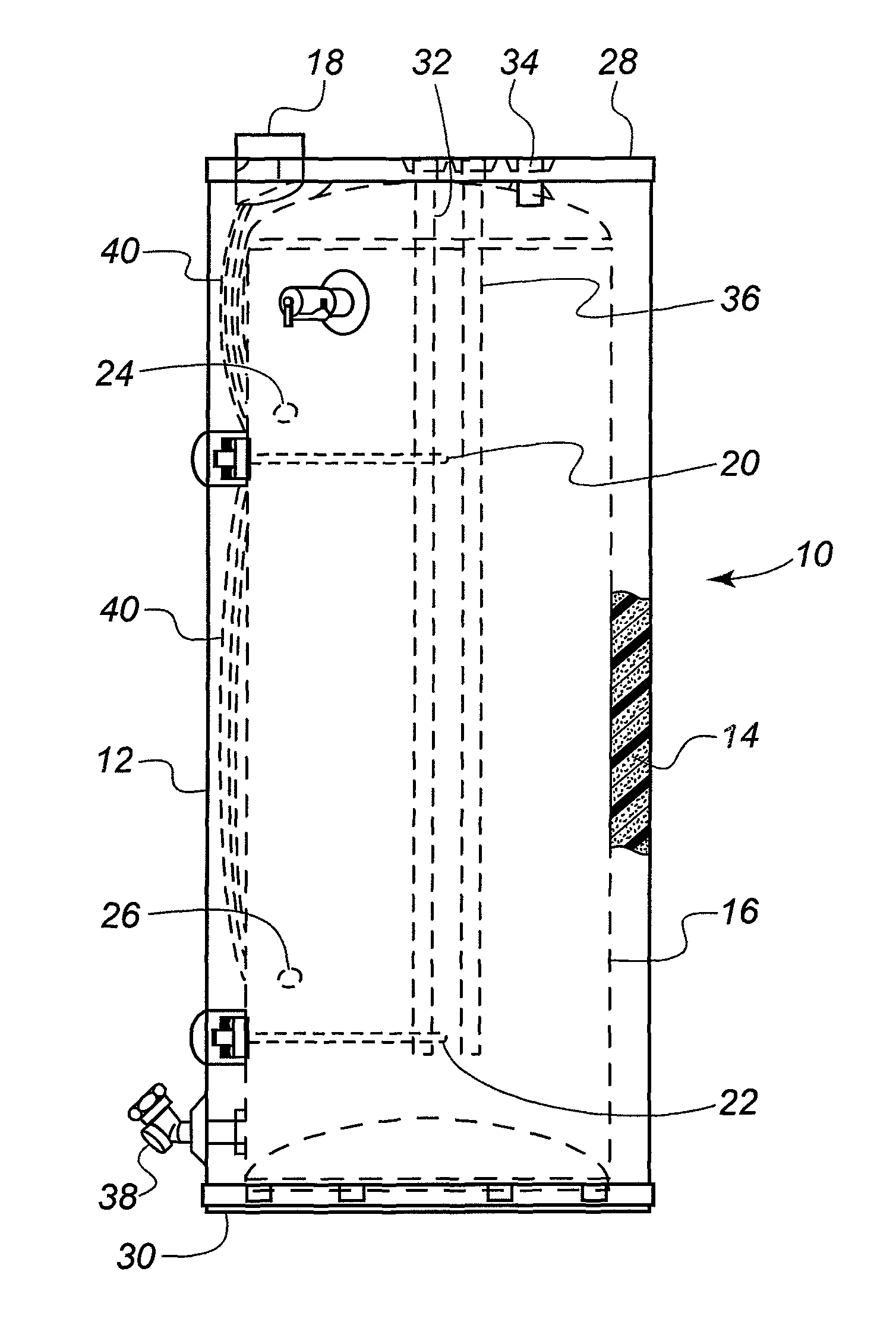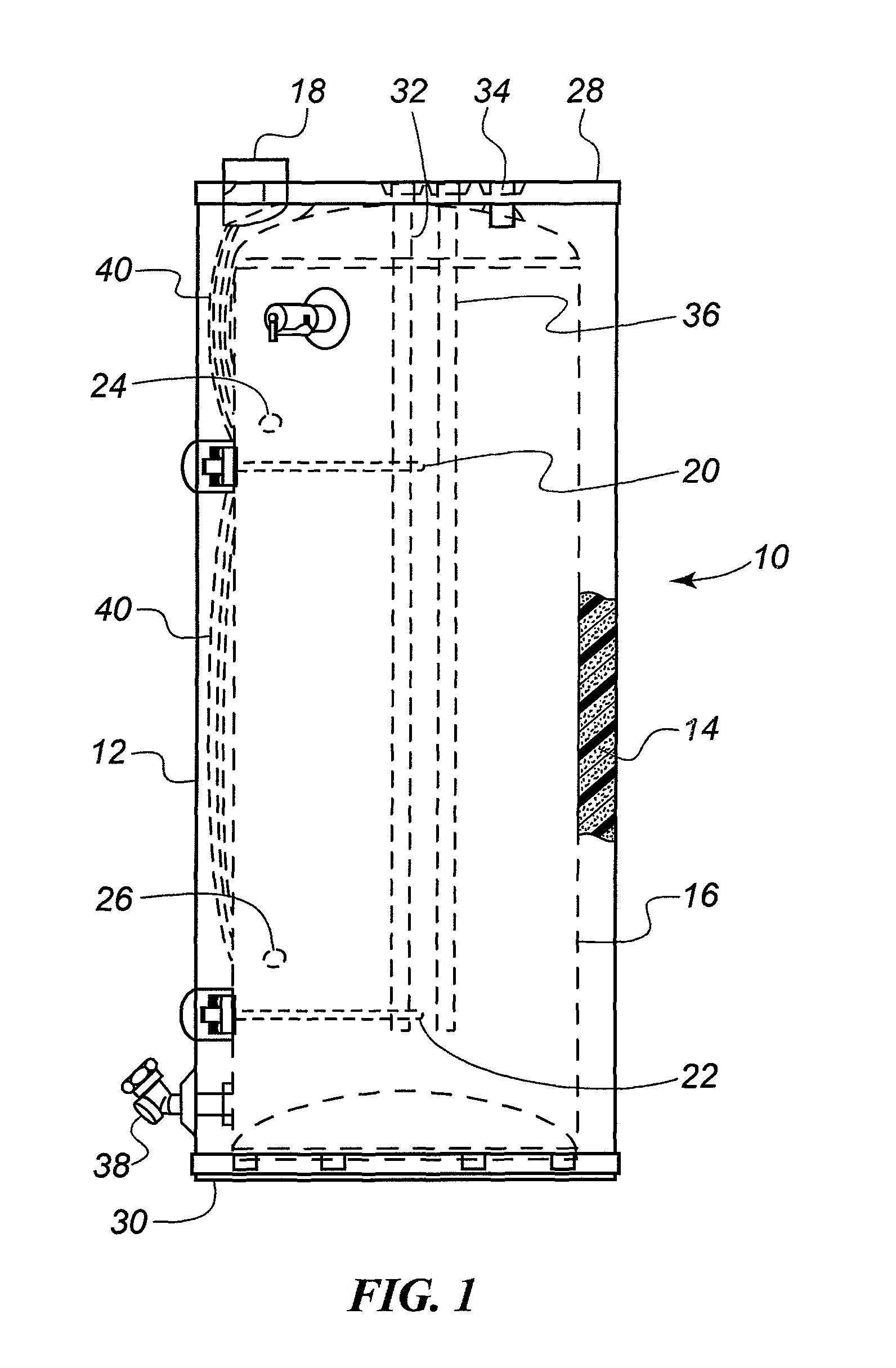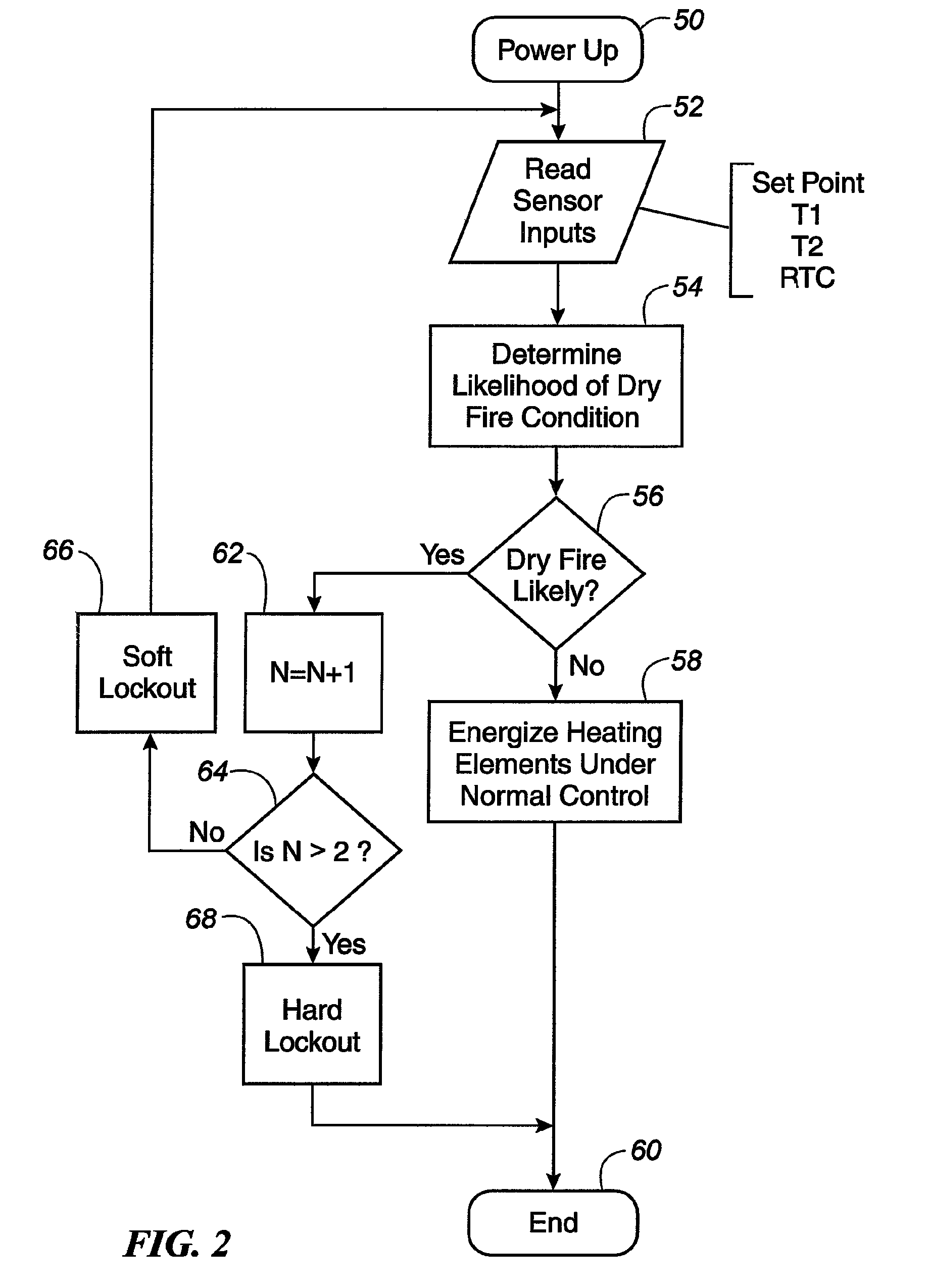Methods for preventing a dry fire condition and a water heater incorporating same
a technology for water heaters and dry fires, which is applied in the direction of lighting and heating apparatus, heating types, and electric water heaters, can solve the problems of electrical heating elements that cannot withstand extended periods of energization without being submerged in water, and the design and construction of such electrical heating elements cannot withstand prolonged energization without being significantly cooled,
- Summary
- Abstract
- Description
- Claims
- Application Information
AI Technical Summary
Benefits of technology
Problems solved by technology
Method used
Image
Examples
Embodiment Construction
[0030]Turning now to the drawings, there is illustrated in FIG. 1 an exemplary embodiment of an electric water heater 10 constructed in accordance with the teachings of the present invention. It should be noted, however, that while the foregoing and following description discuss one application of the teachings of the present invention as applied to an electric water heater appliance, the methods described are also applicable to other implementations of electric heating elements for use in liquids, e.g. coffee makers and coffee vending machines. As such, the following description should be taken by way of example and not by way of limitation. With this in mind, the general construction and operation of the water heater 10 will now be briefly described to provide a context for understanding the principles of embodiments of the present invention.
[0031]The water heater 10 comprises an outer body 12, a layer of insulation 14, a tank 16, a controller 18, an upper heating element 20, a lo...
PUM
 Login to View More
Login to View More Abstract
Description
Claims
Application Information
 Login to View More
Login to View More - R&D
- Intellectual Property
- Life Sciences
- Materials
- Tech Scout
- Unparalleled Data Quality
- Higher Quality Content
- 60% Fewer Hallucinations
Browse by: Latest US Patents, China's latest patents, Technical Efficacy Thesaurus, Application Domain, Technology Topic, Popular Technical Reports.
© 2025 PatSnap. All rights reserved.Legal|Privacy policy|Modern Slavery Act Transparency Statement|Sitemap|About US| Contact US: help@patsnap.com



